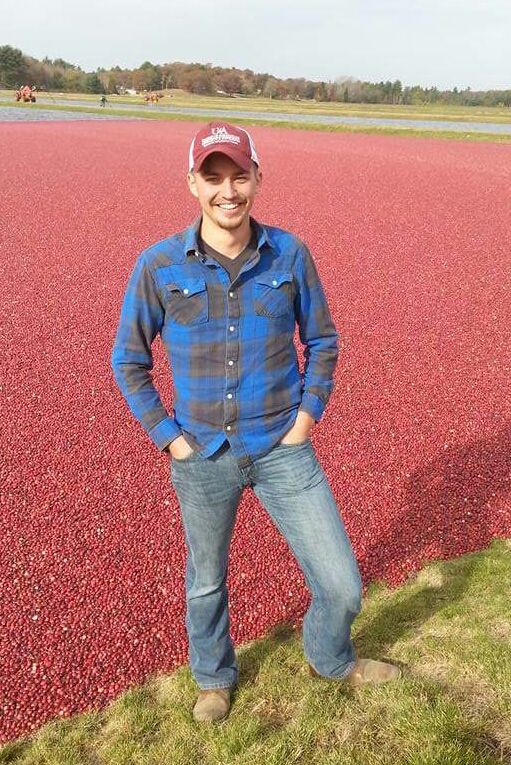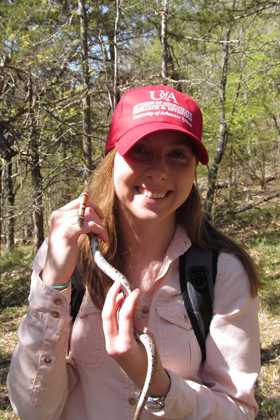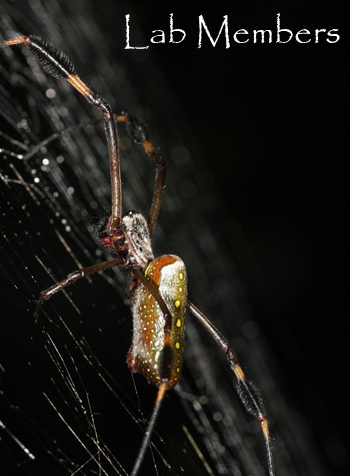
Like most systematists, my interests are broad and I am constantly searching for new challenges, such as studying a new organismal group, utilizing new methods and techniques, or addressing a diverse set of questions.
My current research projects include systematics of several mite groups, including a five-year NSF funded project on water mites in North America. We are also surveying arthropod biodiversity and endemism in the Interior Highlands and have a project addressing the effects of spider mite infestation on cotton. Check out the Research page to learn more about these projects.
One of my favorite aspects of this job is the mentoring of students. I take a guided, hands-off approach with my graduate students and allow them to develop their own projects. My role is to provide the sounding board and experience necessary to develop a feasible graduate project that can be built into a career. If you're interested in joining the lab, check out the rest of the website and feel free to contact me. For more background information, please see my
CV.

I am an organismal biologist studying a fascinating group of arthropods - Parasitengona - which comprises velvet mites, chiggers, and water mites. My dissertation focuses on
Torrenticola, a large genus of water mites that are among the most common invertebrates in North American streams. This project involves descriptive taxonomy, phylogenetic reconstruction, and expeditions to exciting parts of North America. I also study Erythraeidae, a terrestrial parasitengone group that is common, but highly understudied. A primary interest of mine is making taxonomic information more attractive and accessible to non-specialists and specialists alike. Therefore, at every opportunity, I take advantage of modern concepts of publication, imaging, and extending the web presence of my taxon of interest.
I consider myself a true naturalist with an unwavering curiosity for all forms of life. Through research and teaching, I hope to spread appreciation for the world around us. Contrary to the popular stereotype of taxonomy as "just describing species", I have found it to be a vibrant discipline that investigates fundamental aspects of organisms including morphology, development, biogeography, evolution, and behavior.

I arrived at the University of Arkansas in the summer of 2012 from Grand Valley State University, where I completed a MS in Biology with an aquatic emphasis. Like many of the Dowling lab members, my research interests are diverse, and (broadly) include the ecology of aquatic restoration, species assemblages, and phenotypic variation in the responses of species assemblages to abiotic and biotic factors. For additional background information, please see my
CV.
I am currently working on the genus Monatractides (Acari: Hydrachnidia, Torrenticolidae) and my PhD work will involve describing the species within this genus and producing a phylogenetic hypothesis for the group using both morphological and molecular techniques. I also hope to explore the use of Hydrachnidia as water quality indicators. Additionally, as water mites in the family Torrenticolidae have been found in nearly all biogeographic regions, I expect that the PEET Water Mites of North America project will provide an excellent opportunity to investigate the community patterns of these water mites using geospatial analysis and modeling techniques.

I came from the Dominican Republic where I graduated from Biology as a major. My interest for entomology and systematics brought me to the University of Arkansas. Looking for new opportunities of increasing my knowledge, I came across with the fascinating miniature but monumental world of mites, which now has opened me more opportunities and new perspectives of research that I can carry on in the future when I get back to my country.
Currently I am pursuing my Ph.D., after completing my M.S. in the Dowling Lab working with parasitic Nasal Mites (Acari: Mesostigmata, Astigmata and Prostigmata) in birds. My M.S. was more of a survey of nasal mites, whereas my Ph.D. is focused on the ecology, population genetics, and host-parasite coevolution of nasal mites of the brood parasite brown-headed cowbird (Molothrus ater) from across the US.

I am an insect ecologist with a fascination for the obscure and an unquenchable thirst for knowledge. It always surprises me just how many avenues of research are relatively unexplored. My goal as a researcher is to add to our understanding of insect systems by exploring important, impactful, and previously neglected interactions. I hope to continue research through a career in academics, allowing me to share my knowledge and enthusiasm for insects to the next generations of entomologists. (Check out my CV)
I am exploring the role of nocturnal insect pollinators (essentially moths) in fruit agriculture. The void of research on this topic really stuck out while exploring ideas for a dissertation. So much about moths suggests that they are incredibly valuable as pollinators, yet there is little available information on what contribution they make to the production of crops that require or simply benefit from insect pollination. My goal is to quantify the role of moths in fruit production and increase awareness of this important insect-plant interaction. There have been some incredibly surprising and fascinating results so far, and as the research continues, I am confident that it will only reveal more profound details about nocturnal pollinators.


Starting Fall 2017

M.S. (2017)"The Effect of Insects on Seed Set of
Ozark Chinquapin,
Castanea ozarkensis", 141 pages.
Current Employment: Researcher

M.S. (2016)"Survey of Nasal Mites (Acari: Rhinonyssidae, Ereynetidae, Turbinoptidae) in Birds from Three States in the United States ", 63 pages.
Proquest Link to Thesis
Current Employment: Ph.D. student, University of Arkansas

Ph.D. (2016)"Integrative taxonomy of North American torrent mites (Parasitengona: Torrenticolidae: Torrenticola)", 688 pages.
Link to Dissertation
Current Employment: Postdoctoral Researcher University of Arkansas

Ph.D. (2015)"Sampling Terrestrial Arthropod Biodiversity: A Case Study in Arkansas", 426 pages.
Proquest Link to DissertationMS (2011)"Ozark Highland Cunaxidae (Acari: Prostigmata): Descriptions and Keys to Genera Found to Occur in the Region and the New Phylogenetic Hypothesis for the Family", 224 pages.
Proquest Link to Thesis
Current Employment: Insect Lab Director and Extension Educator, Penn State University

M.S. (2015)
"Ozark Highland Cunaxidae (Acari: Prostigmata): Descriptions and Keys to Genera Found to Occur in the Region and the New Phylogenetic Hypothesis for the Family", 224 pages.
Proquest Link to Thesis
Current Employment: English Teacher, Vietnam

M.S. (2015)
"Phenology and Diversity of Arthropod Communities in Leaf Litter", 102 pages.
Proquest Link to Thesis
Current Employment: Ph.D. student, Auburn University

M.S. (2015)
"An Inventory of Endemic Leaf Litter Arthropods of Arkansas with Emphasis on Certain Insect Groups and Diplopoda", 225 pages.
Link to Thesis
Current Employment: Ph.D. student, Virginia Tech, Department of Entomology

MS (2011)
"Impact of Early Infestations of Two-spotted Spider Mites (
Tetranychus urticae) on Cotton Growth and Yield", 43 pages.
Current Employment: Bayer

















